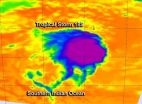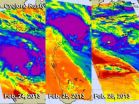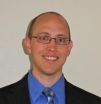(Press-News.org) (SALT LAKE CITY)—An estimated 300,000 U.S. patients get surgical site infections every year, and while the causes are varied, a new University of Utah study suggests that some who get an infection can blame it partly on their genes.
In the Feb. 19, 2013, online edition of the journal Wound Repair and Regeneration, researchers from the University's School of Medicine show through a study of families in the Utah Population Database (UPD) that surgical site infections (SSI) appear to have a significant genetic connection, even in extended relatives. If further investigation bears out these findings, people who are genetically at risk for SSIs might be identified through personal genome analysis before surgery, according to Harriet W. Hopf, M.D., professor of anesthesiology at the University of Utah School of Medicine who is corresponding author on the study.
"Our research showed that people with surgical site infections are more likely to be related to one another than expected in the Utah population" Hopf says. "If that's the case, individual genome analysis might benefit many people if SSIs appear to run in their families. This type of personalized health care could be available in a few years, and with the unparalleled resource of the Utah Population Database (UPDB) and its world-class genetics research, the University of Utah is positioned to make it happen."
It's estimated that SSIs occur in approximately 5 percent of U.S. surgical procedures, resulting in longer hospitalizations and adding approximately $1 billion a year to the nation's health care bill. Infections can occur on the outer layer of skin at the surgical site or in deeper tissue below the skin.
Hopf, who's also associate dean for academic affairs in the School of Medicine, conducted the research with Lisa A. Cannon-Albright, Ph.D., a genetic epidemiologist, professor of internal medicine and senior author on the study, and former U of U medical student and first author, James P. Lee, M.D.
Through the UPDB, a remarkable storehouse of genealogical records, public health data, and records from hospitals and ambulatory surgery centers, the researchers combed the records of 651 University of Utah Hospital patients who had suffered SSIs based on an internationally recognized medical code. (The researchers did not learn the names of the patients.) As controls, they used randomly selected U of U Hospital patients with the same birth year, birthplace, and sex as the group that did have infections. Only people with both parents, all four grandparents, and at least six of eight great-grandparents in the UPDB were analyzed in either group.
A test for excess familial relatedness, the Genealogical Index of Familiality (GIF), was performed to determine whether patients with SSIs were more related than expected, as measured by average relatedness in the randomly selected, matched controls. To rule out the possibility of shared environmental influences on predispositions to SSIs, the researchers also performed the analysis while ignoring first- and second-degree relationships (representing individuals who might be living together or in close proximity, such as parents, siblings, and offspring, and thus sharing non-genetic risk factors), according to Cannon-Albright.
The results might be considered surprising, showing that SSIs occurred more frequently than expected among, for example, third cousins and more distant relatives of individuals in the study. "People who'd had an SSI were significantly more related than we would have thought," she says. "The results indicate a strong genetic contribution to SSIs."
Hopf has researched SSIs for much of her career, suspecting that a mutation in a gene that makes superoxide, a compound released as part of the body's inflammatory response to invading pathogens, might cause a predisposition to the infections. The mutation could render this gene, p-47 phox, less efficient at making superoxide, leaving people more susceptible to SSIs.
Upon coming to the University in 2006, Hopf saw an ideal opportunity to investigate her hypothesis by taking advantage of the UPDB and the school's genetics expertise. "The chance to collaborate with people from different disciplines makes the University of Utah an exceptional place for this kind of research," she says.
For her next step, Hopf wants to draw blood samples from members of high-risk families identified in this study to investigate whether p-47 phox or other genes might predispose people to SSIs.
### END
For some, surgical site infections are in the genes
Utah Population Database aids researchers in finding ties to SSIs in families
2013-02-27
ELSE PRESS RELEASES FROM THIS DATE:
Study revises colorectal cancer risk down and other cancer risks up for women with Lynch Syndrome
2013-02-27
Lynch Syndrome is a heritable genetic mutation that causes colorectal, endometrial and other cancers. A cooperative study that included the University of Colorado Cancer Center, published in this month's issue of the Journal of the National Cancer Institute, revises the risk of colorectal cancer down but other cancers up for women with Lynch Syndrome who have had endometrial cancer.
"This new information helps patient care in two important ways. First, it helps us counsel women with Lynch Syndrome who have had endometrial cancer about the magnitude of their future cancer ...
Police and firefighters at higher risk for mental disorders following traumatic events
2013-02-27
Police, firefighters and other protective services workers who are repeatedly exposed to traumatic events and are new to their profession are at greater risk of developing a psychiatric disorder, according to a new study led by researchers at the Johns Hopkins Bloomberg School of Public Health. The researchers also found that protective services workers do not appear to have a higher prevalence of mental health problems than workers in other occupations. The study results are featured in the February 2013 issue of Disaster Medicine and Public Health Preparedness.
"Our ...
New study shows continued decline in the last remaining stronghold for leatherback sea turtles
2013-02-27
Critically endangered leatherback sea turtle populations in the western Pacific Ocean may be losing their last foothold of survival on the beaches of Indonesia, according to a paper published today in the scientific journal Ecosphere by an international group of scientists.
Researchers from the State University of Papua Indonesia, NOAA Fisheries Service, University of Alabama at Birmingham and World Wildlife Fund Indonesia released a report today documenting the continued decline of leatherback sea turtle nesting in the western Pacific Ocean.
"At least 75 percent ...
Bridal registries replace matriarch with marketplace, new Notre Dame study shows
2013-02-27
Bridal registries might be efficient – sparing the gift-giver from hours of shopping and the recipient from having to return unwanted items. But that convenience may come at a cost: Where once the mom held great sway over selecting the intimate items that shaped the new household, now Target, Macy's and other retailers have taken over that role.
"Decades ago, the main role of the mother of the bride was creating the new home for the union of two families," says Tonya Williams Bradford, assistant professor of marketing at the University of Notre Dame. "By turning to bridal ...
Research suggests scientists have overestimated capacity of wind farms to generate power
2013-02-27
People think of wind as an energy source with few limits, offering an unending power source with distinct capacity advantages over sources that deplete, such as fossil fuel.
Yet, new research in mesoscale atmospheric modeling by UNC Charlotte's Amanda S. Adams and Harvard University's David W. Keith, published Monday in the journal Environmental Research Letters, suggests that the power capacity of large-scale wind farms may have been significantly overestimated.
With large-scale wind farms, as many as hundreds of turbines mounted on tall towers and connected to the ...
Linking insulin to learning
2013-02-27
Though it's most often associated with disorders like diabetes, Harvard researchers have shown how the signaling pathway of insulin and insulin-like peptides plays another critical role in the body – helping to regulate learning and memory.
In addition to showing that the insulin-like peptides play a critical role in regulating the activity of neurons involved in learning and memory, a team of researchers led by Yun Zhang, Associate Professor of Organismic and Evolutionary Biology, show that the interaction between the molecules can fine-tune how, or even if, learning ...
African-ancestry babies get less prenatal care in Brazil
2013-02-27
Low birth weights are more prevalent among Brazilians with African ancestry and may be attributed to less use of prenatal care facilities and where those ethnic groups live, according to a new study.
The study from researchers at the University of Iowa and health analysts in South America also suggests that infants of African ancestry, alone or mixed, were more likely to be born prematurely than those born of European-only stock. The findings could help policymakers decide how best to bridge the difference in infant health among non-European-ancestry races in South America's ...
NASA infrared data shows Tropical Cyclone 18S still battling wind shear
2013-02-27
An infrared look at Tropical Storm 18S by NASA's Aqua satellite revealed wind shear continues to take its toll on the storm and keeps pushing its main precipitation away from the center of the storm.
Wind shear is a major factor that can keep a tropical cyclone "down" or unable to consolidate and intensify because it keeps pounding the circulation of winds head on. Strong wind shear has been battering Tropical Cyclone 18S for a couple of days and is expected to continue the next couple of days.
On Feb. 26 at 1500 UTC (10 a.m. EST) Tropical Storm 18S was located about ...
NASA satellites see slow-moving Cyclone Rusty before landfall
2013-02-27
Cyclone Rusty has been moving very slow over the last two days on its approach to landfall near Port Hedland in Western Australia, and NASA satellites have observed the storm's increase in power. NASA's TRMM and Aqua satellites provided rainfall, cloud height and temperature data that showed Cyclone Rusty intensified as it neared land.
Rusty is a large storm and its slow movement means more rainfall, more flooding potential, increasingly rough surf and a longer period of tropical-storm-force winds along the Pilbara coast.
The Australian Bureau of Meteorology (ABOM) ...
Libertarian paternalism and school lunches: Guiding healthier behavior while preserving choices
2013-02-27
In January 2012, the United States Department of Agriculture passed a series of regulations designed to make school lunches more nutritious, which included requiring schools to increase whole grain offerings and making students select either a fruit or vegetable with their purchased lunch. However, children cannot be forced to eat these healthier lunches. In a new study scheduled for publication in The Journal of Pediatrics, researchers determined that small, inexpensive changes to school cafeterias influenced the choice and consumption of healthier foods.
Andrew S. ...
LAST 30 PRESS RELEASES:
Scalable and healable gradient textiles for multi‑scenario radiative cooling via bicomponent blow spinning
Research shows informed traders never let a good climate crisis go to waste
Intelligent XGBoost framework enhances asphalt pavement skid resistance assessment
Dual-function biomaterials for postoperative osteosarcoma: Tumor suppression and bone regeneration
New framework reveals where transport emissions concentrate in Singapore
NTP-enhanced lattice oxygen activation in Ce-Co catalysts for low-temperature soot combustion
Synergistic interface engineering in Cu-Zn-Ce catalysts for efficient CO2 hydrogenation to methanol
COVID-19 leaves a lasting mark on the human brain
Scientists use ultrasound to soften and treat cancer tumors without damaging healthy tissue
Community swimming program for Black youth boosts skills, sense of belonging, study finds
Specific depressive symptoms in midlife linked to increased dementia risk
An ‘illuminating’ design sheds light on cholesterol
Who is more likely to get long COVID?
Study showcases resilience and rapid growth of “living rocks”
Naval Research Lab diver earns Office of Naval Research 2025 Sailor of the Year
New Mayo-led study establishes practical definition for rapidly progressive dementia
Fossil fuel industry’s “climate false solutions” reinforce its power and aggravate environmental injustice
Researchers reveal bias in a widely used measure of algorithm performance
Alcohol causes cancer. A study from IOCB Prague confirms damage to DNA and shows how cells defend against it
Hidden viruses in wastewater treatment may shape public health risks, study finds
Unlock the power of nature: how biomass can transform climate mitigation
Biochar reshapes hidden soil microbes that capture carbon dioxide in farmland
Reducing saturated fat intake shows mortality benefit, but only in high-risk individuals
Manta rays create mobile ecosystems, study finds
Study: Mixed results in using lipoic acid to treat progressive multiple sclerosis
Norbert Holtkamp appointed director of Fermi National Accelerator Laboratory
New agentic AI platform accelerates advanced optics design
Biologists discover neurons use physical signals — not electricity — to stabilize communication
Researchers discover that a hormone can access the brain by hitchhiking
University of Oklahoma researcher awarded funding to pursue AI-powered material design
[Press-News.org] For some, surgical site infections are in the genesUtah Population Database aids researchers in finding ties to SSIs in families



